Visual artist and curator Antonia B. Larkin is The 912's featured artist
- Oops!Something went wrong.Please try again later.
It was 3 a.m. outside of the High Museum of Art in Atlanta when my friends and I realized just how far we would go to consume art. We were freezing in the December winter, literally huddled together, as we waited in line for the coveted tickets to see Yayoi Kusama's 2018 "Infinity Mirror Rooms" exhibition at the museum.
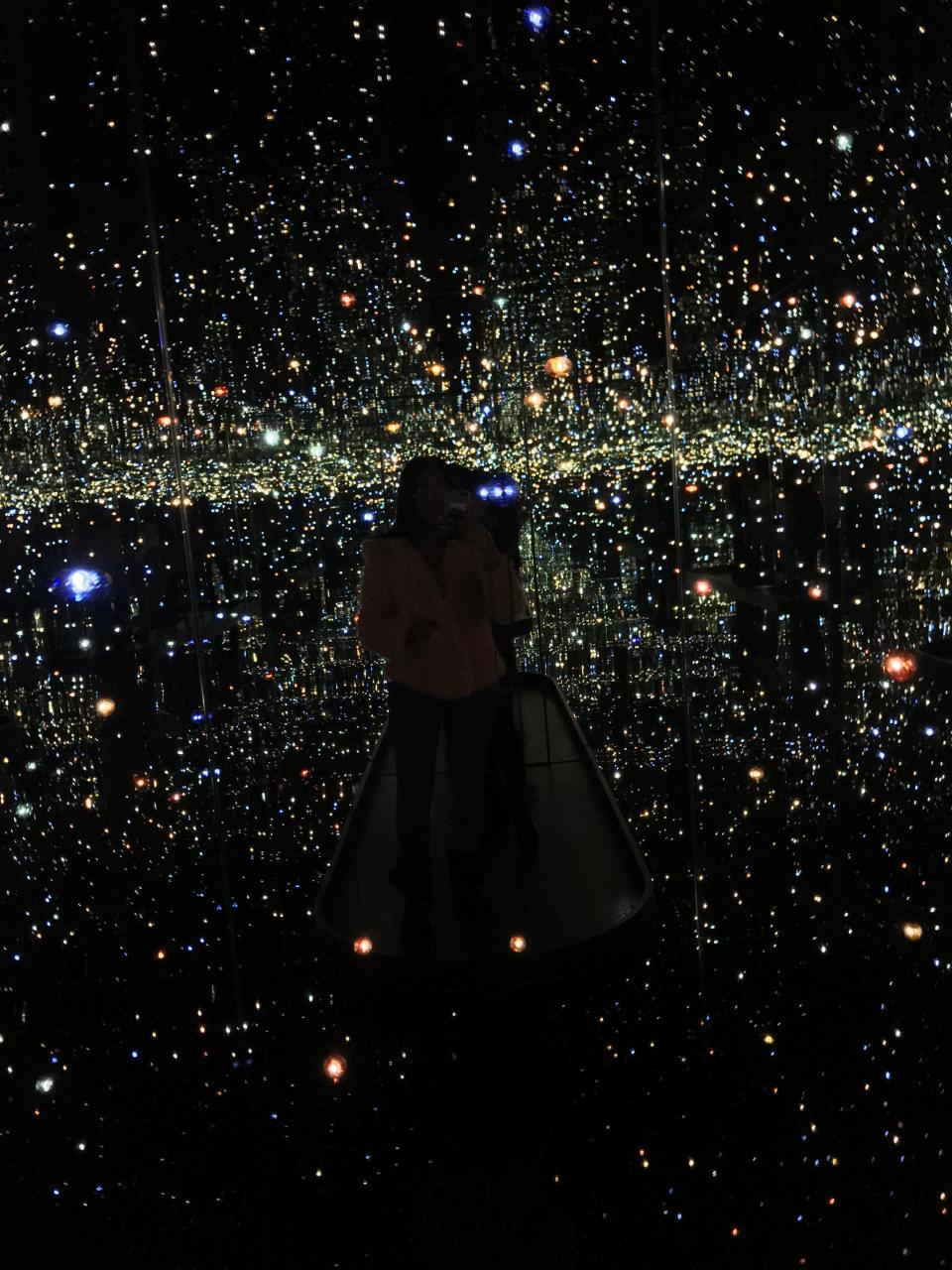
There were only 100 tickets available each day, and we waited outside in line for close to 5 hours before getting our lucky tickets for a 4:00 p.m. showing. We were each running on maybe 2 to 3 hours of sleep, a granola bar and eagerness to see what would become an experience we would talk about for months.
The next winter, The High presented Virgil Abloh's "Figures of Speech" exhibit. I unfortunately didn't get the chance to go myself, but it was so nice to see several of my friends and people I followed on Instagram posting pictures in front of Abloh's work. I knew him as a Ghanaian American man who had broken fashion barriers for so many Black aspiring artists and designers. I'm sure that exhibit and that experience will live with so many who looked at Abloh as an inspiration, and his legacy will surely live on through those memories.
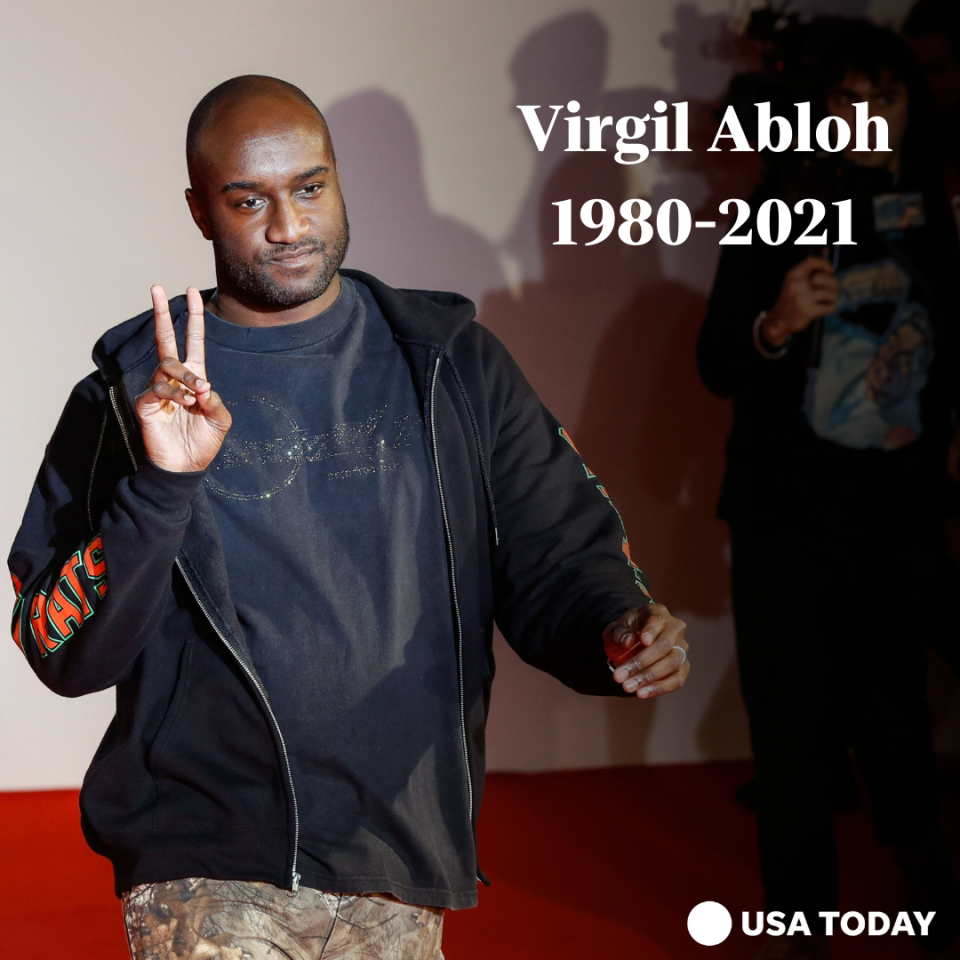
— Laura Nwogu, quality of life reporter at the Savannah Morning News
Follow me on Twitter at @lauranwogu_ or email me at lnwogu@gannett.com
Pulse of The 912
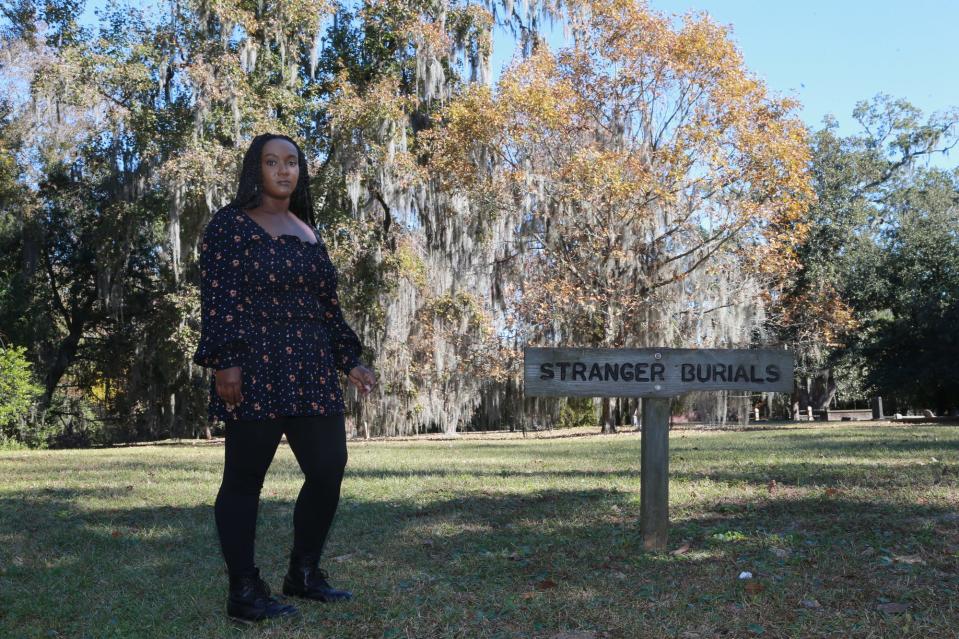
Antonia B. Larkin is a visual artist and curator whose art focuses on rest that heals, restores and gives an intimate look into the journey of her as an artist. In her art, she explores themes of Black womanhood and the parallels between ancestral lineage, Black American culture and personal narrative.
LN: What's the earliest memory you have of your love of art?
AL: "Let’s see. I don't know the earliest memory, but I will say that playing with Barbies sparked my imagination as a kid."
LN: What was it about playing with those Barbies sparked your imagination?
AL: "Creating stories."
LN: And your art examines themes of intimacy, healing and representation. Why was it important for you to dive deeper into those themes and explore those themes?
AL: "That sort of happened in grad school and just dealing with growing as a person and reading about how to navigate Black womanhood, and also navigating Black womanhood myself. My experiences led me to that direction."
LN: A lot of your work is also about rest and sleeping. I found that kind of hit me because rest and sleep, especially in the Black community and with Black women — in the sense of our peace — is such a luxury. What introduced that space of thinking for you?
AL: “So, I started thinking about rest and sleep as a form of healing. When I first started making work about it, it was a really stressful time in my life, so I think that's what guided it. But also, I'm really into Andy Warhol's film and the slowness of it, the anti-climatic quality of it. That also influenced my work.
“When I was in grad school, I worked for the Cranbrook Art Museum, and they showed his Empire State film and it's really long — I don't remember how long it is. I would sit in there and just watch it. It was so relaxing, and it's almost like mind-numbing. He also has a video of someone sleeping laying down and those things kind of sparked, or influenced, my work.”
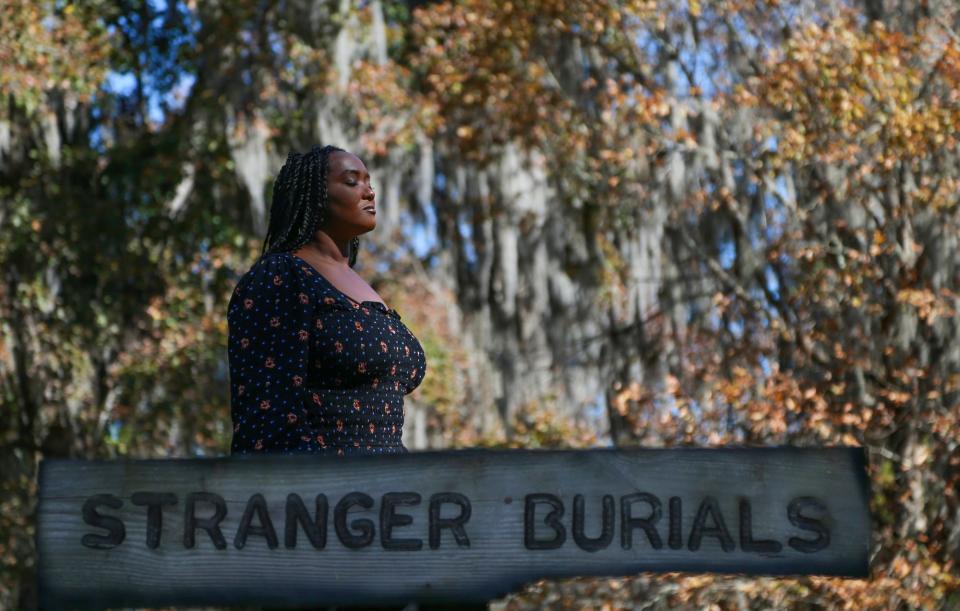
LN: Was there a big difference in how your art was influenced in Detroit than it was in Savannah?
AL: "I started missing the South and like longing for the South. I was trying to infuse that in my work but was unsuccessful because I wasn't surrounded by the right community, or the right environment is a better way to describe that. And so, I couldn't get in that headspace. But moving back to the South helps a lot with that."
LN: You not only create art, but you're also a curator. What is it like being a curator as opposed to the one creating the art?
AL: "When I'm curating, I am creating art, in a sense. Like putting art together that speaks with each other, that talks to each other. There is a creative process that goes along with it. It’s different from my art practice. Instead of me researching and investigating things like Black womanhood and rest, I’m researching other people's work and figuring out how different artists' work play together."
LN: And in both those roles that you have, how do you keep your creative juices going? How do you constantly find inspiration?
AL: “I read. I look at other artists. I try to think of rest since rest is such a big part of my work. I've been trying to think of it in different ways. So, I started off with just pure rest — rest is healing. And now, my work is sort of about our last rest. So, reading and researching about different ways of rest, researching Black American culture and in terms of the things that I'm interested in."
LN: For the art that you created for The 912, it's synthetic hair wrapped around chicken wire with faux flowers and fruit and metal beads. Can you describe the inspiration behind the art that you created?
AL: "Yeah, so that work is a part of a homegoing series. I started doing genealogy research wanting to know where my family comes from, and in that research I've found it hard to find certain things like resting places. I searched far and wide to find my grandfather’s, grandmother's resting places but couldn’t. Even though I found their death certificates and it says where they should be, they're not there or they don't have headstones.
"And so, thinking about how to commemorate or make a memorial for my female ancestors — ancestors in general — and just thinking about how to make a memorial to my lineage and also thinking about my own mortality in the same vein or breath."
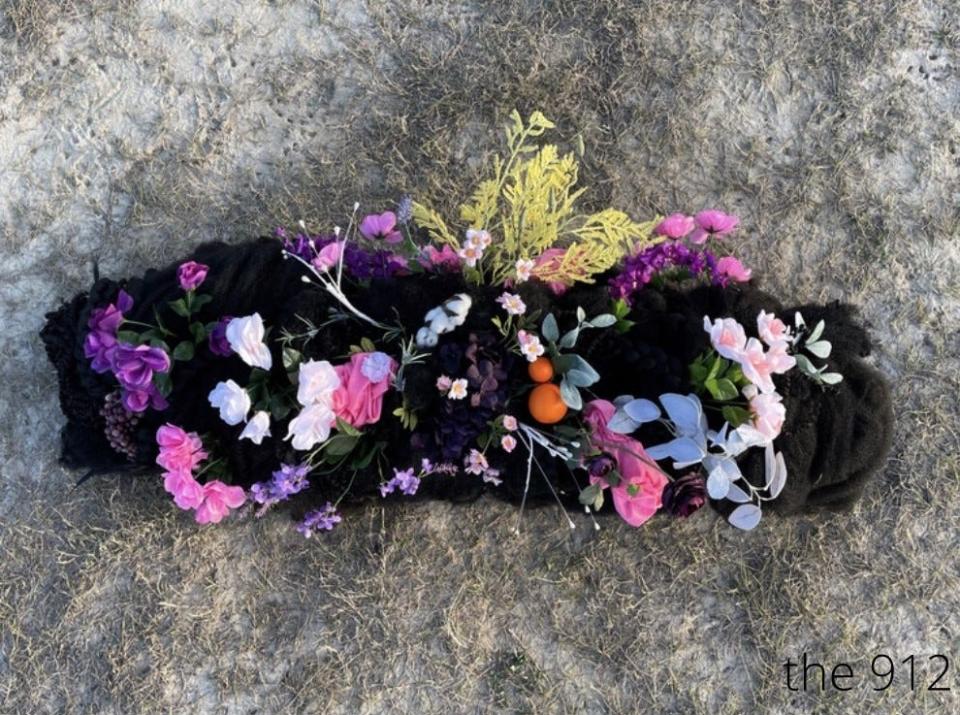
LN: I think this is such an interesting representation of that.
And you partnered with Live Oak Public Library to help create the Radical Care Youth Art Project. How important is it for you to make sure that the youth have the tools that they need to go forth and be able to create their own art to express themselves?
AL: "I think it's around five or six when kids start not wanting to explore creativity because they start wanting to draw representationally, and if they're unsuccessful, they're like, ‘Whatever. I can't draw.’ I really think it's good to encourage young folks to continue to explore making art in different ways, and giving them not just pen and paper but an idea. An idea as a way to spark their creativity, and I think art gives people agency and it's important for kids to have that."
LN: Why do you love the 912?
AL: "The history. It's so rich in history. I went to school in Detroit, and I came back because I love the South. I love Savannah. I love the culture."
Art of The 912
The 912 newsletter will highlight a local Black artist every two months as the header image for the weekly issue. This month's artist is Antonia B. Larkin.
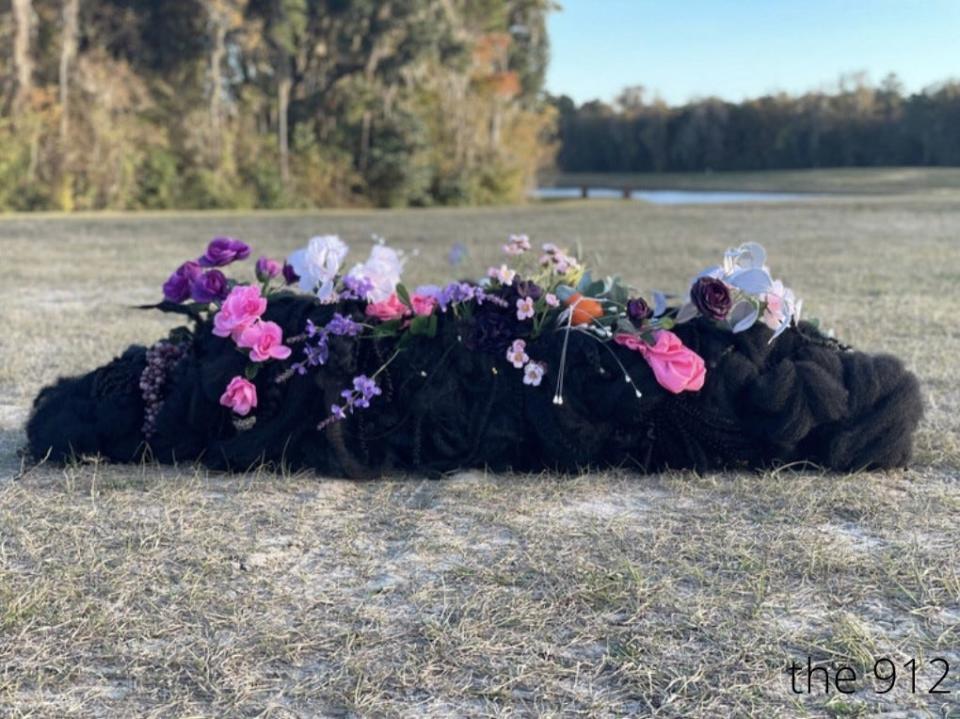
Follow Larkin at her website and on Instagram:
Website: https://antoniablarkin.net/
Instagram: @niablurkin and @thicc.reads
Stories of the 912
1: Wes Lee the Wordsmith brought together his moments of life for new album, 'COPE Deluxe'
Rapper Wes Lee the Wordsmith has been called “the Poet bringing raw soul back into Hip-Hop,” thanks to intelligent, thoughtful lyrics and a moving, spoken-word flow. Lee’s new album, “COPE Deluxe,” which was released Nov. 1, is a soulful, comforting response to the myriad mental, emotional, and physical traumas he has overcome in his life.
2: 2021 Savannah Artists Gift Guide: Here are ways to support local artisans this holiday season
A few weeks ago, there seemed to be an almost concentrated effort by the media to push consumers to get their holiday shopping done early because of the product shortages caused by ships stuck in port.
In response, an equal number of memes popped up on social media with a contrary message: Instead of risking not getting your Amazon order in time, buy from local artists.
3: "You earned that": Savannah-Chatham County's class of 2021 graduation rates reach 90%
Savannah Chatham County Public School System teachers, students and counselors faced disrupted learning experiences since March 2020 because of the COVID pandemic. By developing a new plan of action, they came out of it with a 90% graduation rate the class of 2020-21. This was an achievement school officials are proud of.
4: Stacey Abrams is running for Georgia governor, setting up potential rematch with Gov. Brian Kemp
Democrat Stacey Abrams announced on Wednesday she was running for Georgia governor, setting up the first test of Georgia's swing state status following President Joe Biden's win during the 2020 election.
Formerly incarcerated people are nearly 10 times more likely to experience homelessness than the general public, according to a Prison Policy Initiative report, which used data from a 2008 survey, and was published in 2018. Without stable housing or being pushed to live in high crime areas, two out of three formerly incarcerated individuals in Georgia are more likely to reoffend and return to prison within three years of their release.
This article originally appeared on Savannah Morning News: Visual artist, curator Antonia B. Larkin is The 912's featured artist

